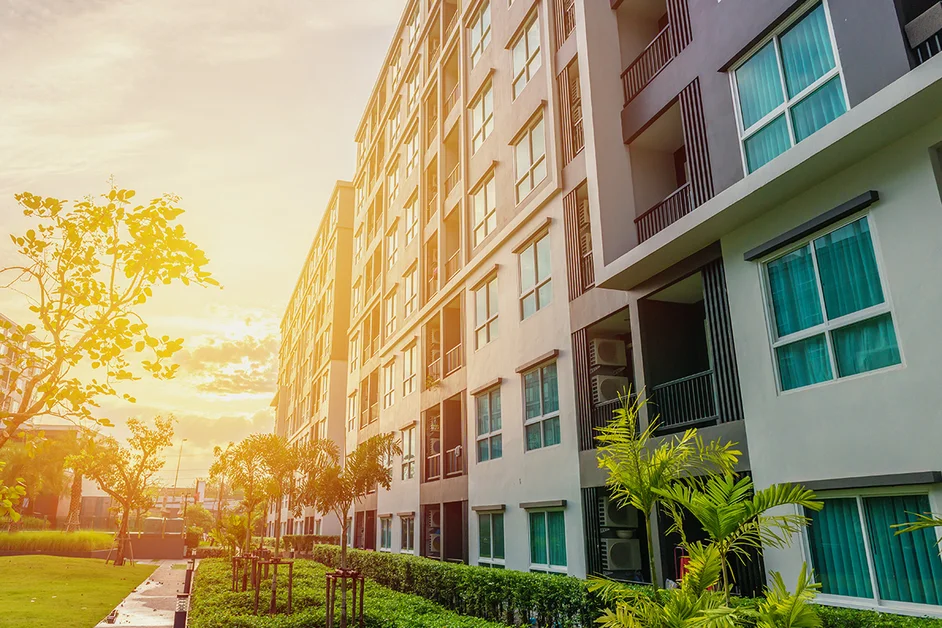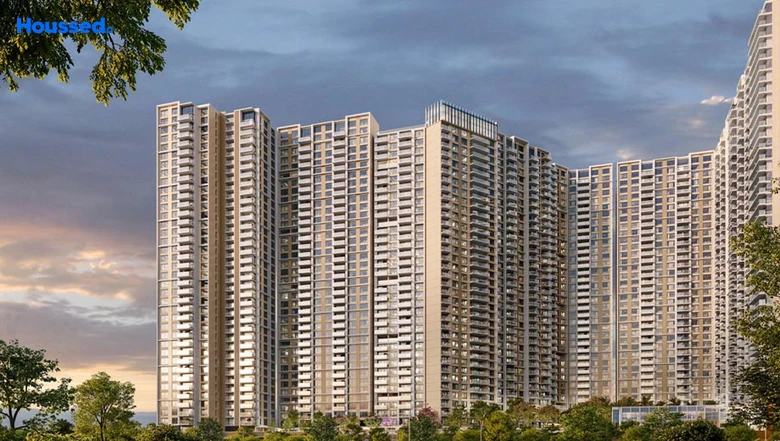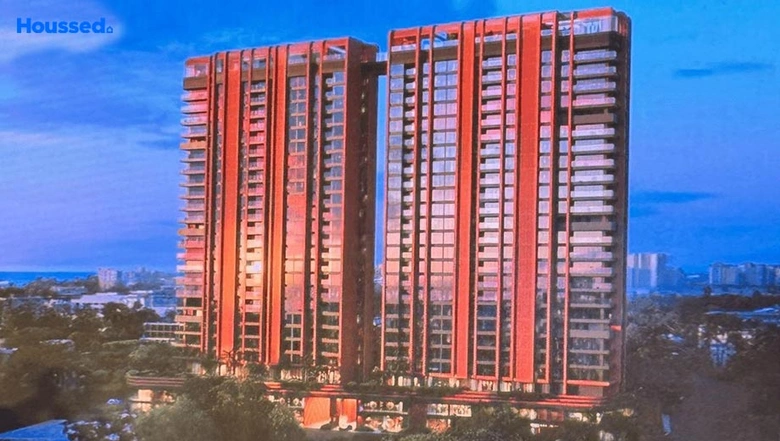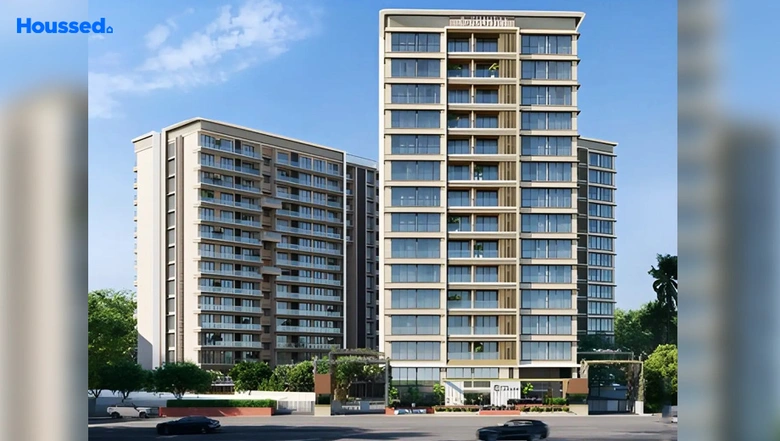Is Buying a Flat a Good Investment in India? Know Why

In 2025, with rising urbanisation and evolving lifestyle needs, many Indians are rethinking their investment strategies—and for good reason. If you're among those wondering "Is buying a flat a good investment in India", you're not alone.
The truth is, a flat continues to offer solid returns, practical living, and long-term financial stability—but only if you understand where, what, and when to invest.
In this guide, we'll break down the current real estate trends, ROI stats, pros and cons, and expert insights to help you decide whether buying a flat in India in 2025 aligns with your financial goals.
Let’s dive into what makes flat investment a viable option—or not—for you.
Is It Worth Buying Flats for Investment in India?
Yes, buying a flat in India for investment in 2025 can be worth it—but only with strategic planning, location research, and a long-term vision. Done right, it can deliver steady passive income and long-term capital appreciation.
With real estate on the rise and rental demand increasing steadily in 2025, buying flats for investment continues to be a profitable opportunity. Flats offer a stable income stream, especially in urban and semi-urban areas where rental yields remain strong and property appreciation is consistent.
Why Investing in Flats Can Be a Smart Move
- Consistent Rental Income:
Flats in metro cities and growing suburbs often deliver high rental yield, especially in areas with good connectivity, schools, and commercial hubs.
- Appreciation Potential:
With India’s growing urban population, the demand for affordable and mid-segment housing is fueling price appreciation in select markets.
Also Read - Things to Check Before Buying a Flat
Buying a Flat to Rent: Is It a Good Investment in 2025?
With India’s real estate sector witnessing consistent growth, buying a flat to rent has become a popular option for investors seeking steady rental income and long-term capital appreciation. But is it truly worth it in 2025?
The answer isn’t one-size-fits-all—it depends on key factors like location, market demand, property condition, and your financial strategy.
Following is a breakdown of the pros, challenges, and costs of investing in flats for rental income.
Why Buy a Flat to Rent in India?
Investing in a buy-to-let property can offer a range of financial benefits if done strategically:
- Monthly Passive Income: Renting out a flat ensures regular cash flow, especially in high-demand urban locations.
- Appreciation Potential: Well-located flats often see capital appreciation, adding to long-term returns.
- Hedge Against Inflation: Real estate values, along with rental income, typically rise with inflation, protecting your wealth.
- Tax Benefits: You can claim deductions on home loan interest, property taxes, and maintenance costs.
What Influences Profitability?
To ensure high rental ROI, investors should analyse the following:
- Location & Rental Demand:
- Metro cities like Mumbai, Bangalore, and Hyderabad offer high occupancy rates.
- Vacation spots or Tier 2 cities may fluctuate seasonally.
- Metro cities like Mumbai, Bangalore, and Hyderabad offer high occupancy rates.
- Tenant Type:
- Flats near IT parks and universities attract young professionals or students.
- Suburban flats with amenities appeal to families looking for long-term rentals.
- Flats near IT parks and universities attract young professionals or students.
- Rental Strategy:
- Long-term rentals offer stable income.
- Short-term rentals (e.g., on Airbnb) can be more profitable in tourist-heavy areas but require active management.
- Long-term rentals offer stable income.
- Maintenance and Upkeep:
- Regular upkeep and timely renovations preserve the property's value and desirability.
- Regular upkeep and timely renovations preserve the property's value and desirability.
The Hidden Costs of Rental Flat Ownership
While the initial investment is important, ongoing expenses can also impact profitability. Here’s what to plan for:
One-Time Costs:
- Down payment or deposit (especially for resale flats)
- Registration, notary, and stamp duty fees
- Brokerage or legal fees
Recurring Costs:
- Monthly EMIs (if financed through a home loan)
- Maintenance charges/society fees
- Property tax and garbage/refuse collection charges
- Insurance for property damage or liability
- Periodic repairs or upgrades to retain tenant interest
Extra Considerations:
- Title transfer or registration changes
- Renovation costs for resale or older flats
- Vacancy periods (loss of rental income)
Also Read - Property Investment in India
Why Flats Are Popular Investment Choices in Urban India
Flats tend to be more desirable in urban centres due to their proximity to workplaces, schools, healthcare facilities, and public transport.
These features make them highly attractive to young professionals, students, and short-term tenants, ensuring steady occupancy and rental income. For this reason, investing in flats located in city centres or rapidly growing suburbs is often a strategic move.
Affordability: Flats Are Cheaper Than Independent Houses
Compared to independent houses, flats are generally more budget-friendly. Their lower purchase price makes them accessible for first-time investors or for those who are looking to diversify their portfolios.
Furthermore, there may be financial benefits when purchasing multiple flats in a single block, such as the ability to negotiate discounts with developers or freeholders, especially in bulk deals.
Design Versatility: Flexible Living Spaces for Tenant Appeal
Another advantage of flats is their flexible layout. The single-level design of most flats allows for easy modifications.
Investors can reconfigure layouts to meet tenant preferences, such as creating open-plan kitchens or combined living-dining areas. These changes can enhance rental appeal and help attract a wider range of potential tenants.
Understanding Leasehold Properties and Their Limitations
Another important consideration is that most flats are sold as leasehold properties. While this often means a lower initial cost, leasehold arrangements come with specific challenges.
Leases with less than 80 years remaining can make it difficult to secure financing or resell the property. Extending a lease can be expensive, so it’s vital to check the lease length and renewal terms before buying.
Legal Restrictions: The Role of Restrictive Covenants
Legal restrictions, known as restrictive covenants, are another factor that sets flats apart from houses.
These covenants may limit how the property can be used—for example, by restricting subletting, banning pets, or enforcing quiet hours. It's essential to have a solicitor review the lease agreement carefully during the conveyancing process to avoid future complications.
Maintenance Responsibilities and Shared Building Management
Maintenance is a shared responsibility in flat ownership. While the owner is responsible for maintaining the interior of the flat, they also contribute to the upkeep of communal areas such as hallways, lifts, and roofs.
Unexpected repairs to the building’s structure or shared systems can lead to large, unplanned expenses. Proactive management and budgeting are necessary to maintain cash flow and avoid disruption.
Recurring Costs: Ground Rent and Service Charges
Leasehold flats often come with annual ground rent and service charges. These recurring costs can impact rental profit margins, so it’s important to understand what the fees cover, whether they are fixed or subject to increases, and how frequently they are reviewed. Transparency in service charge breakdowns helps avoid surprises later.
Be Prepared for Unexpected Bills
Recent history has shown that flat owners can face unexpectedly large bills for safety-related upgrades.
For instance, the aftermath of the Grenfell Tower tragedy in the UK led to significant costs related to cladding and fire safety in similar buildings worldwide. These events underscore the importance of knowing who is legally liable for structural issues and ensuring appropriate insurance coverage is in place.
Improvement Restrictions: Getting Permission for Renovations
Renovations in flats often require approval from the freeholder and, in some cases, other residents in the building. This process can delay improvements or upgrades, so investors must factor in time for permissions and ensure compliance with lease terms before undertaking changes to the property.
Dealing with Neighbours and Tenant Issues
Neighbour relations can significantly influence the success of a flat investment. Noise complaints, disruptive tenants, or frequent turnover can damage the property’s reputation and affect tenant retention.
Engaging a solicitor with experience in leasehold issues and working with reputable property managers can help investors maintain harmony and tenant satisfaction.
Also Read - Apartments for Sale in Mumbai
How Buying a Flat Is a Good Investment in India (2025 Perspective)
The following are the key financial advantages that make buying a flat a smart investment choice.
1. Flats Generate Regular Rental Income
One of the benefits of investing in flats is the steady income stream generated through rental yields. Urban areas across India, particularly metro cities like Bangalore, Mumbai, Delhi, and Hyderabad, are witnessing high demand for rental housing due to a growing working population.
Owning a flat in these regions can ensure a consistent monthly income, which can be used to cover loan EMIs or reinvested for wealth accumulation. Over time, rental income can become a significant part of your passive income portfolio.
2. Property Value Appreciation and Market Stability
Real estate, especially in high-demand regions, has shown steady appreciation over the years. Flats located in prime or upcoming localities tend to gain value due to factors like infrastructure development, improved connectivity, and population growth.
Compared to volatile markets like stocks or crypto, real estate offers a level of stability that appeals to conservative and growth-focused investors alike. This long-term upward trend adds to the capital value of the asset.
3. Diversification of Your Investment Portfolio
Incorporating real estate—particularly flats—into your investment strategy adds a layer of diversification that can reduce overall portfolio risk. Flats offer a low correlation with traditional assets like equities and bonds, helping to offset market fluctuations.
During stock market downturns or economic uncertainty, real estate often retains or gains value, thereby contributing to a more balanced and resilient financial portfolio.
4. Long-Term Wealth Creation Through Real Estate
Flats offer a strong foundation for long-term wealth creation. With rental income compounding over time and property values appreciating steadily, investors can build substantial equity.
Whether used for retirement planning, children's education, or future investments, the long-term benefits of flat ownership extend well beyond short-term profits. Reinvesting surplus rental income into other real estate or savings schemes can accelerate wealth accumulation.
5. Natural Hedge Against Inflation
Real estate has historically served as a hedge against inflation. As the cost of living increases, so do property values and rental rates.
Flats, in particular, tend to appreciate in tandem with inflation, preserving the real value of your investment. This ability to outpace inflation makes flats a reliable asset for protecting your purchasing power over time.
6. Higher ROI Compared to Many Other Assets
Flats in India, especially in fast-growing cities and tier-2 markets, often deliver higher returns on investment (ROI) than many traditional assets.
Factors such as favourable market cycles, infrastructure upgrades, and rising rental demand contribute to superior ROI.
Unlike volatile assets like stocks, real estate provides tangible, physical value and less exposure to day-to-day market swings, making it a more secure yet rewarding option.
7. Tax Benefits for Real Estate Investors
Investing in flats offers attractive tax benefits in India. Property owners can claim deductions on home loan interest under Section 24(b), principal repayments under Section 80C, and even in municipal taxes.
Furthermore, investors may benefit from depreciation deductions and tax savings on rental income, depending on their tax slab. Consulting with a qualified tax advisor helps optimise these benefits and ensures compliance with current tax laws.
Also Read - How to Buy a House
Flat vs Plot: Which Is the Better Real Estate Investment in India?
When it comes to investing in real estate in India, choosing between a flat and a plot is a critical decision. Both options have unique advantages, but which is better for your investment goals in India?
Following is a breakdown of the key factors that influence your investment decision and help you choose the right path for maximising returns.
1. Construction Type: Ready-to-Move Flats vs Custom-Built Homes
Flats offer the convenience of ready-to-move-in properties with pre-designed layouts. They are ideal for those who want a hassle-free living experience without the time or effort needed for construction. However, they come with limited customisation options.
On the other hand, investing in a plot gives you the freedom to design and build your property as per your specific preferences. Whether you're constructing a single-family home, apartment complex, or commercial property, a plot allows complete control over the design and structure. This flexibility can potentially add more value to your investment over time.
Key Insight: Flats are great for immediate occupancy, while plots offer customisation and long-term value creation.
2. Cost and Expenses: Flats vs Plots for Investment
The cost of flats is typically straightforward. You pay for the flat itself, along with maintenance fees and additional costs like parking, amenities, and registration. Flats, especially in urban areas like Mumbai, Delhi, and Bengaluru, tend to be more expensive per square foot due to their location and demand.
For plots, the cost structure is slightly more complex. You have the initial land acquisition cost, followed by construction expenses. The overall cost of construction on a plot will depend on factors like the location, size of the land, and the type of construction materials used.
Pro Tip: Carefully analyse the location and future development potential of a plot to estimate its ROI (Return on Investment) more accurately.
3. ROI and Appreciation: High Potential for Plots
Flats, while appreciating in value, tend to experience depreciation after a certain point, particularly as the building ages or requires maintenance. Furthermore, flats may have limited appreciation due to shared ownership and common area maintenance costs.
In terms of property appreciation, plots generally outperform flats. The value of land appreciates over time, driven by factors like urbanisation, demand, and scarcity of land in high-demand areas. As cities expand, the value of plots, especially in developing locations, often rises faster than that of flats.
Pro Tip: If you’re looking for long-term capital appreciation, plots in emerging cities or developing areas can be a better investment.
4. Rental Income: Quick Cash Flow with Flats
If your goal is to generate rental income, flats are the clear winner. Flats are already built and ready to be rented out, making them a great option for investors seeking immediate cash flow. In cities with high demand for rental properties, such as Noida, Chennai, and Hyderabad, flats can quickly generate a consistent stream of rental income.
Plots do not provide rental income until you build on them, which can take time and investment. However, once you develop a multi-unit building or apartment complex, the rental income potential can be significantly higher.
Insight: Flats offer immediate rental returns, while plots can generate income in the long-term once developed.
5. Risk Factors: Weighing Flats vs Plots
All real estate investments carry risks, but the nature of those risks varies between flats and plots.
- Flats are subject to risks related to the developer’s reputation, construction quality, and property maintenance. Poorly constructed flats may incur high repair costs and reduce long-term value.
- Plots offer more control over construction, but there are risks such as land disputes, zoning laws, or the uncertainty of infrastructure development in less-developed areas. Additionally, legal issues related to land ownership can arise, especially with agricultural land conversion.
Pro Tip: Always perform due diligence on the property and location before committing to either option to mitigate risk.
6. Financing: Easier Loan Approvals for Flats
Getting financing for a flat is typically more straightforward, as banks and financial institutions are more comfortable providing home loans for flats. Builders often have tie-ups with banks, streamlining the process.
In contrast, obtaining a loan for a plot is more challenging. Land loans are harder to secure because banks view land as riskier than developed property. Additionally, banks may offer loans only if you plan to construct the plot within a certain timeframe.
Pro Tip: If securing easy financing is a priority, investing in a flat may be a better choice. However, if you're ready to invest a larger amount and manage the process, a plot can offer greater control.
7. Tax Benefits: Deductions for Flats vs Plots
Both flats and plots come with their respective tax benefits, though they differ based on the stage of investment.
For flats, investors can benefit from tax deductions on mortgage interest under Section 24 and principal repayment under Section 80C of the Income Tax Act. Additionally, rental income from flats is subject to taxation, but deductions like the standard deduction (30%) on rental income are available.
For plots, tax benefits are more limited until construction begins. Only once the construction is completed can you avail deductions on the home loan interest.
Pro Tip: If you're looking for immediate tax relief, flats offer clear advantages in terms of deductions.
Also Read - Plots vs Flats
Flat vs House: Which Is a Better Real Estate Investment?
When considering a real estate investment, the choice between buying a flat or a house is a common dilemma for investors.
Each option comes with its unique set of advantages and disadvantages. In this article, we will compare the key investment aspects of flats and houses, including financing availability, capital growth, and buyer appeal, to help you make an informed decision.
1. Financing Availability: Easier Loans for Houses
When it comes to financing, houses are typically viewed as low-risk investments by banks and lenders, making them easier to finance. Since houses usually have larger plots and more space, they often present a safer investment to lenders.
Consequently, buyers can expect more financing options, including lower interest rates and higher loan amounts.
Flats, on the other hand, are sometimes considered riskier investments, particularly those in older buildings or with short leasehold terms. This could result in limited financing options and higher down payment requirements.
Lenders may view flats as having less long-term value than houses due to the shared ownership and the potential for maintenance issues in large apartment complexes.
Key Insight: If financing ease is a priority, houses tend to have more favourable loan terms.
2. Family Appeal: Houses Offer More Space and Privacy
Houses are generally more appealing to families because they offer greater space and privacy compared to flats. Families with children or pets often prefer houses due to larger living areas, gardens, driveways, and garages. The ability to have private outdoor spaces and parking makes houses the preferred choice for those seeking a more comfortable lifestyle.
Flats, however, may not provide the same level of privacy or space. They typically have shared walls and communal areas, which may not be ideal for families who value their own private outdoor areas. Flats are generally better suited for single professionals, young couples, or those looking for affordable living in urban centers.
Pro Tip: If you're targeting families or looking for a property with long-term growth potential, a house might be the better option.
3. Capital Growth: Houses Provide More Predictable Growth
Historically, houses have shown more predictable capital growth compared to flats. Houses typically appreciate in value more steadily over time, particularly in residential neighbourhoods where families tend to invest. Due to factors such as land scarcity and urban expansion, houses in prime locations can see consistent value increases, making them a reliable long-term investment.
Flats, on the other hand, may experience less consistent capital growth. The value of flats can be more volatile, especially in areas with oversupply or where the building ages. Additionally, factors like the building's management and maintenance can impact the long-term value of flats, making their growth less predictable compared to houses.
Key Insight: For investors seeking stable, predictable capital growth, houses generally outperform flats in terms of long-term appreciation.
4. Modifications and Value Addition: Houses Offer More Flexibility
One of the biggest advantages of investing in a house is the potential for modifications and value addition. Houses typically allow for renovations and extensions, such as adding extra rooms, modernising kitchens, or expanding outdoor spaces. These modifications can significantly increase the value of a property.
In contrast, flats often come with restrictions on making structural changes. Many apartment buildings have strict rules about alterations, and modifications may require approval from the building management or homeowners association. This limits the ability to add value through renovations, making flats less flexible for investors looking to enhance property value.
Tip: If you’re looking to renovate and increase property value, a house offers more opportunities for personalisation and improvements.
5. Broad Buyer Appeal: Houses Have a Larger Market
Houses generally have a broader appeal to a wide range of potential buyers, including families, retirees, and individuals looking for more space. The larger market demand for houses, particularly in suburban or semi-urban areas, ensures greater liquidity when selling.
In comparison, flats often appeal to a more specific audience—primarily single professionals, students, or young couples. This niche market may result in slower sales and higher vacancy rates if the property is not in the right location. Additionally, flats in older buildings or less desirable neighbourhoods may face reduced demand over time.
Key Insight: For those seeking an investment with high liquidity, houses generally offer a larger pool of potential buyers and better resale value.
Pros and Cons of Investing in Flats
|
Pros of Investing in Flats |
Cons of Investing in Flats |
|
1. Affordable Entry Point |
1. High Ground Rent and Service Charges |
|
Flats are generally more affordable compared to houses, making them an accessible entry point for real estate investors. |
Flats often come with ground rent and service charges, which can reduce your overall rental income and impact profits. |
|
2. Higher Rental Yields in Specific Markets |
2. Financing Challenges |
|
Flats in high-demand areas like city centres or near universities typically offer better rental yields due to high demand. |
Lenders may view flats as higher-risk properties, requiring a higher loan-to-value (LTV) ratio, making financing more challenging. |
|
3. Steady Rental Income and Low Vacancy Rates |
3. Limited Expansion Potential |
|
Flats are easier to rent out due to high demand, especially in urban areas, leading to reliable rental income and low vacancy rates. |
Flats offer limited opportunities for expansion. You can’t add extensions or loft conversions, restricting the ability to increase value. |
|
4. Lower Maintenance Costs |
4. Lack of Control Over Other Tenants |
|
Flats typically have lower maintenance costs as responsibilities are shared among owners in freehold arrangements. |
You have no control over other tenants in the building. Issues like noisy neighbours or high turnover can affect property desirability. |
|
5. Cost Advantages with Bulk Purchases |
5. Risks with Short Leasehold Terms |
|
Investors can benefit from bulk discounts when buying multiple flats within the same building. |
Flats with less than 70 years remaining on the lease may lose value, and lease extension can be costly and time-consuming. |
|
6. Easier Portfolio Building |
6. Slower Capital Growth |
|
Flats' lower cost makes it easier to build a diversified property portfolio without requiring significant capital investment. |
Some flats, especially high-rises, may experience slower capital growth due to over-supply or attracting lower-income tenants. |
|
7. High Demand in City Centres |
7. Restrictions on Conversion or Use |
|
Flats in urban areas, especially near public transport and job hubs, have high demand, leading to potential property value appreciation. |
Flats may not be suitable for conversion into HMOs or self-contained units due to space limitations or safety regulations. |
|
8. Targeting Specific Demographics |
8. Risk of Restrictive Covenants |
|
Flats are ideal for targeting specific demographics, such as students and young professionals, ensuring steady demand. |
Older flats may come with restrictive covenants that impose legal limitations on use or modifications, requiring legal expertise. |
Also Read - Difference Between Flat and Apartment
Things to Consider Before Buying a Flat
- Location of the Flat
- Proximity to amenities: Ensure the flat is near essential facilities like schools, hospitals, markets, and public transportation. Flats in city centers or well-connected areas typically have higher rental yields and long-term appreciation potential.
- Neighbourhood safety: Investigate the neighbourhood’s safety. Areas with low crime rates and high livability scores tend to be better investments.
- Proximity to amenities: Ensure the flat is near essential facilities like schools, hospitals, markets, and public transportation. Flats in city centers or well-connected areas typically have higher rental yields and long-term appreciation potential.
- Price and Budget
- Affordability: Evaluate your budget and determine whether you can afford the flat, including the down payment, monthly installments, and any maintenance costs.
- Additional expenses: Factor in registration fees, stamp duty, parking fees, and charges for amenities like gymnasiums or swimming pools.
- Financing options: Understand the loan options available and whether the flat meets the criteria set by banks and lenders.
- Affordability: Evaluate your budget and determine whether you can afford the flat, including the down payment, monthly installments, and any maintenance costs.
- Legal Verification
- Title of the Property: Confirm that the flat has clear legal title, without any encumbrances or disputes. Conduct a title search to avoid complications in future.
- Approval of Construction: Verify that the construction has received all necessary approvals from the local authorities, including zoning and building permits.
- Land Use Zoning: Ensure the property is constructed on land that is properly zoned for residential use.
- Title of the Property: Confirm that the flat has clear legal title, without any encumbrances or disputes. Conduct a title search to avoid complications in future.
- Builder’s Reputation
- Reliability and Track Record: Research the reputation of the builder or developer. Opt for well-known builders with a proven history of timely deliveries and quality construction.
- Previous Projects: Investigate the builder’s past projects and evaluate their quality and client feedback.
- Reliability and Track Record: Research the reputation of the builder or developer. Opt for well-known builders with a proven history of timely deliveries and quality construction.
- Maintenance Costs
- Service charges: Understand the monthly or annual maintenance fees and services included. These charges can add up over time, so they must be factored into your ongoing costs.
- Repairs and upkeep: Consider any long-term maintenance and repair costs that could arise, especially if the flat is in an older building.
- Service charges: Understand the monthly or annual maintenance fees and services included. These charges can add up over time, so they must be factored into your ongoing costs.
- Size and Layout
- Space Requirements: Ensure the flat’s size and layout meet your needs, whether you're buying for yourself or as a rental property.
- Room configurations: Consider the number of rooms, their sizes, and how well they suit your lifestyle. Also, assess the flow and natural light in the flat.
- Space Requirements: Ensure the flat’s size and layout meet your needs, whether you're buying for yourself or as a rental property.
- Resale Potential
- Capital appreciation: Choose a location with strong potential for capital growth over time. Flats in growing urban areas or locations near future infrastructural developments tend to have better resale value.
- Market trends: Stay updated on the local real estate market trends to ensure you’re purchasing a flat with good future prospects.
- Capital appreciation: Choose a location with strong potential for capital growth over time. Flats in growing urban areas or locations near future infrastructural developments tend to have better resale value.
- Leasehold vs. Freehold
- Leasehold flats: If you’re buying a leasehold flat, check the length of the lease remaining. A lease with less than 70 years left can be challenging to resell or refinance.
- Freehold properties: Freehold properties or flats provide full ownership of the property and the land, offering more control and flexibility.
- Leasehold flats: If you’re buying a leasehold flat, check the length of the lease remaining. A lease with less than 70 years left can be challenging to resell or refinance.
- Amenities and Facilities
- Building amenities: Many flats come with amenities such as gyms, swimming pools, and security features. Consider whether these amenities will enhance your lifestyle or attract potential tenants if buying as an investment.
- Parking space: Ensure that a parking space is available for residents and guests. Lack of parking can create inconvenience and may affect property demand.
- Building amenities: Many flats come with amenities such as gyms, swimming pools, and security features. Consider whether these amenities will enhance your lifestyle or attract potential tenants if buying as an investment.
- Property Management and Association Rules
- Society rules and regulations: Understand the rules of the housing society or apartment association, including restrictions on renting, renovation policies, and maintenance protocols.
- Property management services: Investigate how the property is managed, including the handling of repairs, waste management, and common areas.
- Society rules and regulations: Understand the rules of the housing society or apartment association, including restrictions on renting, renovation policies, and maintenance protocols.
- Safety and Security
- Building security: Ensure the building has adequate security measures such as CCTV cameras, security guards, and access control to protect your property.
- Fire and safety compliance: Verify that the flat complies with fire safety regulations, including the presence of fire extinguishers, fire exits, and emergency protocols.
- Building security: Ensure the building has adequate security measures such as CCTV cameras, security guards, and access control to protect your property.
- Future Development
- Upcoming projects in the area: Check for any planned developments near the property, such as new roads, public transportation hubs, or shopping centers, which can increase the value of the flat.
- Environmental factors: Consider the impact of potential future developments, such as noise pollution or congestion, which could affect the livability or value of your flat.
- Upcoming projects in the area: Check for any planned developments near the property, such as new roads, public transportation hubs, or shopping centers, which can increase the value of the flat.
Conclusion:
So, buying a flat is a profitable investment. It offers lower initial costs, steady rental income, and potential long-term appreciation. However, it's pivotal to consider location, legal checks, builder reputation, and future resale potential.
While flats are affordable and require less maintenance, they come with challenges such as service charges and limited customisation options. With thorough research and careful planning, flats can be a solid investment for both passive income and long-term wealth.
FAQ's
Yes, buying a flat can be a good investment due to its potential for regular rental income, appreciation in value, diversification benefits, and being a hedge against inflation. However, careful planning, market research, and understanding associated costs are crucial for success.
The cost of buying a flat for rent includes the property's sale price, deposit (for second-hand properties), monthly mortgage fees, notary fees, taxes, community fees, refuse tax, property tax, and potential renovation costs. Understanding these financial considerations is crucial for informed decision-making.
The decision between buying a flat or a plot depends on individual preferences and investment goals. Flats offer convenience, immediate rental income, and lower entry costs. Plots allow customisation, potential for higher appreciation, and income generation after construction. Consider factors like construction type, expenses, and financing options to decide.
Yes, buying a flat can provide a better investment option due to its affordability, potential for higher rental yields, and the ability to diversify a property portfolio. Flats in desirable locations, especially city centres, are often in demand, contributing to potential long-term appreciation and stable rental income.
Buying a flat may offer advantages such as affordability, higher rental yields, and easier portfolio diversification. However, flats come with challenges like higher service charges, potential financing difficulties, and limited modification options. Houses provide more space, predictable capital growth, and greater customisation opportunities but often at a higher cost.
Pros of investing in flats include lower entry prices, higher cash-on-cash returns, affordability, potential for quicker rental income, shared maintenance costs, ability to negotiate bulk discounts, flexibility in converting living spaces, and diverse market opportunities for investment.
Cons of investing in flats include high ground rent and service charges, financing challenges, limited space for customisation, the potential for high tenant turnover, hidden maintenance costs, difficulties obtaining finance for shorter leases, and the risk of decreased value when the lease term diminishes.









